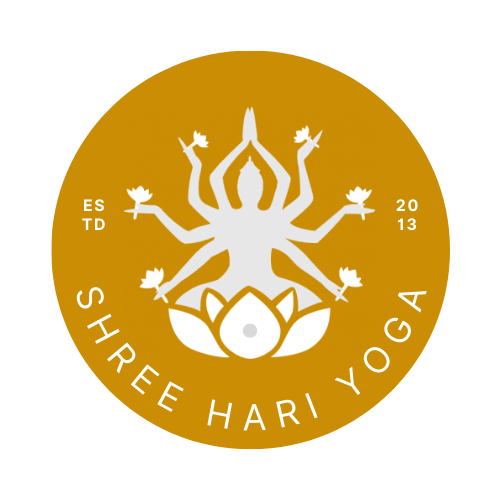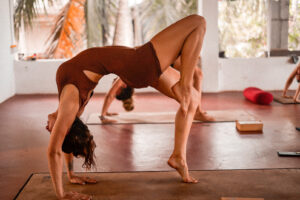Table of Contents
ToggleUtkatasana (Chair Pose) – Strengthen Legs, Arms, and Core
Introduction:
Utkatasana, also known as Chair Pose, strengthens the legs, arms, and core while stimulating the diaphragm and heart. Unlike its translation “chair,” Utkata means fierce, powerful, or intense. This pose resembles sitting on an imaginary chair, requiring focus, alignment, and strength.
Steps to Practice Chair Pose (Utkatasana)
-
Stand in Tadasana. Breathe deeply and raise your arms overhead. Keep biceps close to the ears and palms facing each other or joined together.
-
Exhale and bend your knees until your thighs are as parallel to the floor as possible. Your torso forms roughly a right angle with your thighs.
-
Press the tops of your thighs toward your heels, keeping your inner thighs parallel.
-
Engage your back and shoulder muscles. Lengthen the lower back by tucking the tailbone slightly toward the floor.
-
Hold the pose for 30–60 seconds.
-
Inhale and straighten your knees while raising your arms to exit.
-
Exhale and return your arms to your sides in Tadasana.
Benefits of Chair Pose (Utkatasana)
1. Strengthen and Stretch Muscles
Utkatasana strengthens the quadriceps, hamstrings, calves, glutes, arms, and shoulders. The pose stretches the chest, spine, upper back, and neck. Raising the arms also stretches intercostal muscles and armpits.
2. Improve Flexibility and Range of Motion
Bending the knees and maintaining spinal alignment strengthens the hips, knees, and ankles. Regular practice improves agility and prepares the body for advanced squats and twists.
3. Boost Breath, Diaphragm, and Chest
Raising the arms expands the chest and improves diaphragm flexibility. Controlled breathing enhances oxygen flow, strengthens the immune system, and builds stamina.
4. Posture, Balance, and Concentration
Maintaining Utkatasana develops lower-body strength, tones the core, and improves spinal flexibility. Focus on the gaze (Drishti) at your palms to enhance balance and concentration.
5. Stimulate Organs and Circulation
Engaging the abdominal muscles massages internal organs, boosts digestion, and improves circulation. A lengthened spine calms the nervous system and tones spinal nerves.
6. Therapeutic Benefits
This pose can support digestion, relieve constipation, balance thyroid function, and aid reproductive health. It can also help regulate menstrual cycles, improve fertility, and strengthen pelvic muscles.
7. Emotional Balance and Chakras
Utkatasana activates the root, sacral, and third-eye chakras. It enhances creativity, focus, emotional stability, and grounding. The throat chakra benefits from the slight neck stretch, improving communication.
8. Athletic Benefits
Utkatasana Benefits Chair Pose strengthens key leg muscles, making it valuable for runners, athletes, and fitness enthusiasts. It stabilizes knees, enhances shock absorption, and tones the lower body.
Contraindications
-
Avoid with knee, ankle, hip, or shoulder injuries.
-
Students with migraines, high blood pressure, vertigo, or heart issues should avoid this pose.
-
Pregnant women in the third trimester should not practice this posture.
-
Postpartum women and seniors should practice only with supervision.
-
Maintain proper breath awareness to prevent dizziness or imbalance.





